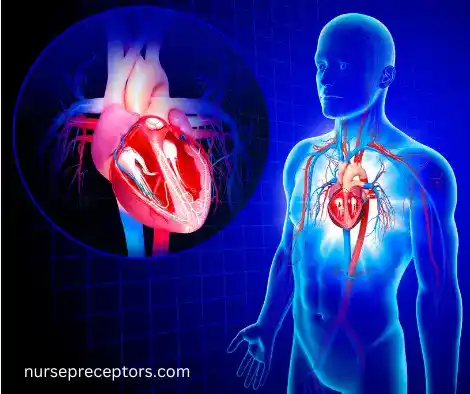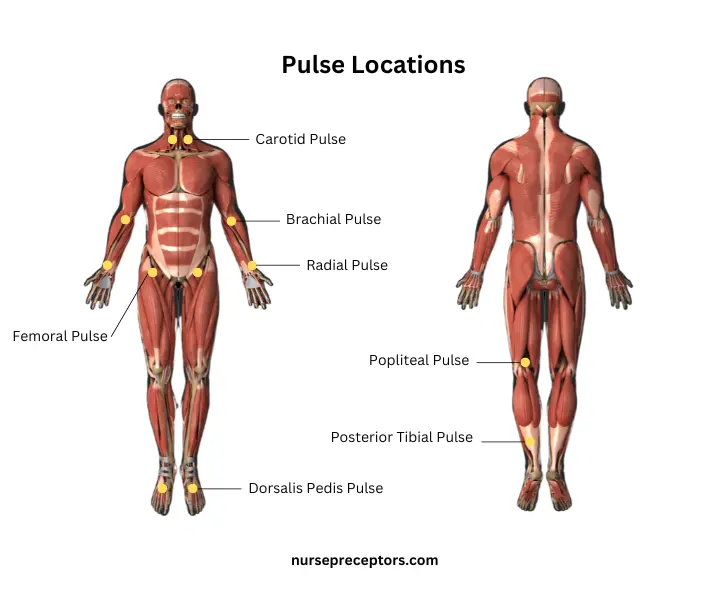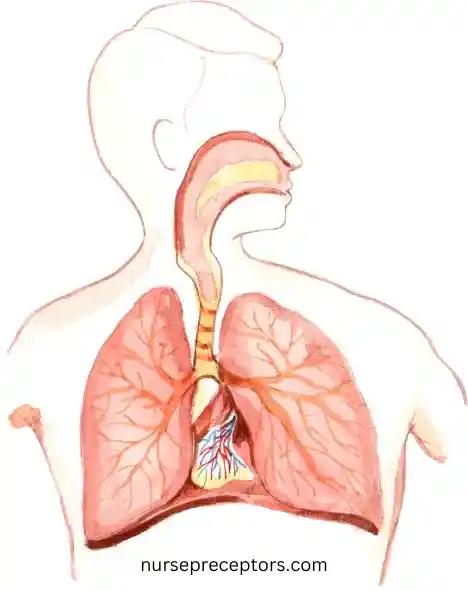What are the vital signs?
The four primary vital signs that healthcare professionals often monitor include pulse, respiration, temperature, and blood pressure. Each vital sign provides unique information about the body’s physiological status, and they are interrelated in many ways.
The pulse, or heart rate, is the measurement of the number of times the heart beats/minute. It provides essential information about heart function and blood circulation.
Respiration, however, refers to the respiratory rate or the number of breaths a person takes per minute. It is a vital sign that reflects lung function and oxygen exchange.
Body temperature is another primary vital sign that indicates the body’s thermal balance. It is a reflection of the body’s ability to produce and get rid of heat. You can learn the full guide about 4 Basic Vital Signs in the USA from our online trusted website.
Lastly, blood pressure measures the force exerted by the blood against the walls of the arteries. It is a vital sign that provides insights into heart function and vascular health.
What is Pulse?

Pulse is the expansion and contraction of the arteries with a rhythm due to the contraction and expansion of the heart. It is a vital sign that reflects the heart rate and rhythm, providing valuable information about a person’s overall health.
Measured in beats per minute (BPM), a normal resting pulse rate for adults ranges between 60 to 100 BPM. The pulse can be felt in various body locations where arteries are close to the skin’s surface, such as the wrist, neck, and groin.
The strength and regularity of the pulse can also offer insights into cardiovascular function. Monitoring the pulse is an essential component of medical assessments, as irregularities or abnormalities in the pulse can indicate underlying health conditions, such as heart disease or circulation problems.
Additionally, changes in pulse rate and quality can be indicative of stress, physical exertion, or emotional arousal.
Therefore, understanding and interpreting the pulse is crucial for healthcare professionals in evaluating an individual’s well-being and formulating appropriate treatment plans. Here’s a detailed explanation:
1. Measurement
Methods: Pulse can be measured manually by palpating (feeling) the arterial pulsations at various locations in the body or using electronic devices such as pulse oximeters or heart rate monitors.
Pulse Points: There are several common sites for measuring pulse in the human body. These include the radial artery located in the wrist area, carotid artery situated in the neck, brachial artery found inside the elbow, femoral artery located in the groin area, popliteal artery situated behind the knee, dorsalis pedis artery which is found on top of the foot, and posterior tibial artery located behind the medial ankle.

2. Normal Range
Adults: The normal resting heart rate for adults is typically between 60 to 100 beats per minute (bpm), with variations depending on factors such as age, fitness level, and overall health.
Children: Children generally have higher average heart rates compared to adults. Newborns may have a resting heart rate of 100 to 160 bpm, which gradually decreases with age.
Athletes: Well-trained athletes may have lower resting heart rates, often below 60 bpm, due to their cardiovascular conditioning.
3. Regulation
Function: The heart pumps oxygenated blood to the body’s tissues and organs, delivering vital nutrients and removing metabolic waste products.
Autonomic Nervous System: Heart rate is primarily regulated by the autonomic nervous system, which consists of the sympathetic and parasympathetic branches. The sympathetic nervous system increases heart rate (fight-or-flight response), while the parasympathetic nervous system decreases heart rate (rest-and-digest response).
Factors Affecting Heart Rate: Heart rate can be influenced by various factors, including physical activity, emotional stress, temperature, hormonal fluctuations, medications, and medical conditions.
4. Clinical Significance
Bradycardia: Bradycardia refers to a heart rate that is slower than normal, typically below 60 bpm in adults. It can be physiological (e.g., in athletes) or pathological, indicating underlying health issues such as heart conduction abnormalities, medication side effects, or metabolic disorders.
Tachycardia: Tachycardia is an elevated heart rate, often exceeding 100 bpm in adults at rest. It can be a normal response to exercise, stress, or fever, but persistent or excessively high tachycardia may indicate conditions such as dehydration, anemia, heart rhythm disorders, or cardiovascular disease.
Arrhythmias: Arrhythmias are abnormal heart rhythms characterized by irregular or erratic heartbeats. They can manifest as bradyarrhythmias (slow heart rhythms) or tachyarrhythmias (fast heart rhythms), posing risks of inadequate blood flow, fainting, or cardiac arrest if severe.
Monitoring pulse is crucial for assessing cardiovascular function, detecting abnormalities, and guiding medical interventions. Changes in heart rate can provide valuable diagnostic information and help healthcare providers evaluate a person’s overall health status.
What is Respiration?

Respiration refers to the exchange of gases between living organisms and their environment. This process refers to the inhalation of oxygen and the exhalation of carbon dioxide.
In simpler terms, respiration is how cells obtain energy from nutrients. This energy is then used to power the various cellular processes that are essential for life.
There are two primary types of cellular respiration: “aerobic respiration”, which requires oxygen and is the most efficient way for cells to produce energy, and “anaerobic respiration”, which is a process that occurs without the presence of oxygen and is less efficient compared to aerobic respiration.
In humans and many other animals, respiration occurs in specialized organs such as the lungs, where oxygen is taken in and carbon dioxide is expelled.
In plants, respiration occurs in cells throughout the organism, with oxygen being absorbed through small openings on the leaves called stomata.
Overall, respiration is a fundamental process for all living organisms, allowing them to sustain life by obtaining the necessary energy for growth, movement, and other vital functions. Here’s a detailed explanation:
1. Components of Respiration
External Respiration: This occurs in the lungs, where oxygen from inhaled air enters the bloodstream and carbon dioxide is removed from the bloodstream into the exhaled air.
Internal Respiration: This occurs at the cellular level, where oxygen is delivered to tissues and organs via the bloodstream, and carbon dioxide produced by cellular metabolism is transported back to the lungs to be exhaled.
2. Measurement
Respiratory Rate: Respiratory rate refers to the number of breaths a person takes per minute, and it is commonly measured by counting the chest or abdominal movements within a specific period, such as one minute.
Respiratory Depth: Respiratory depth refers to the volume of air moved in and out with each breath. It can be assessed subjectively (shallow, normal, deep) or measured using spirometry, a technique that quantifies lung volumes and capacities.
Respiratory Rhythm: Respiratory rhythm refers to the pattern of breathing, including regularity, smoothness, and pauses between breaths. Irregular breathing patterns may indicate underlying respiratory or neurological disorders.
3. Normal Range
Adults: The typical respiratory rate for adults at rest ranges between 12 to 20 breaths per minute. Respiratory rates outside this range may be indicative of respiratory dysfunction or other medical conditions.
Children: Children generally have higher respiratory rates compared to adults. The normal range varies with age, with newborns having higher rates (typically 30 to 60 breaths per minute) that gradually decrease as they grow.
Factors Affecting Respiratory Rate: Respiratory rate can be influenced by various factors, including age, physical activity, emotional state, environmental conditions (e.g., altitude, temperature), medications, and medical conditions (e.g., lung diseases, metabolic disorders).
4. Regulation
Respiratory Center: The respiratory center, located in the brainstem, regulates breathing by coordinating the activity of respiratory muscles, including the diaphragm and intercostal muscles.
Chemoreceptors: Chemoreceptors in the brainstem and peripheral tissues detect changes in blood oxygen, carbon dioxide, and pH levels, signaling the respiratory center to adjust breathing rate and depth accordingly.
Other Factors: Various factors, such as emotions, pain, temperature, and hormonal fluctuations, can influence breathing patterns through neural and hormonal pathways.
5. Clinical Significance
Hypoventilation: Hypoventilation refers to inadequate ventilation, resulting in decreased oxygen intake and increased carbon dioxide retention. It can lead to respiratory acidosis and hypoxemia, potentially causing symptoms such as fatigue, confusion, and respiratory failure.
Hyperventilation: Hyperventilation is excessive ventilation, leading to decreased carbon dioxide levels in the blood (hypocapnia). It can be triggered by anxiety, pain, fever, or metabolic acidosis and may cause symptoms such as dizziness, tingling sensations, and fainting.
Respiratory Disorders: Abnormal respiratory patterns, such as rapid shallow breathing, prolonged breath holding, or irregular breathing, may be indicative of respiratory disorders (e.g., asthma, chronic obstructive pulmonary disease, respiratory infections), neurological conditions (e.g., stroke, spinal cord injury), or metabolic abnormalities.
Monitoring respiration is essential for assessing respiratory function, detecting abnormalities, and guiding interventions to optimize oxygenation and ventilation.
Changes in respiratory rate, depth, and rhythm can provide valuable diagnostic information and help healthcare providers evaluate a person’s respiratory status and overall health.
What is Temperature?

Body temperature is a measure of the body’s ability to generate and get rid of heat. It can be defined as a vital health indicator that reflects the body’s metabolic activity, regulated by the hypothalamus, a part of the brain.
The standard measurement of body temperature is typically around 98.6°F (37°C), although it can slightly vary depending on the individual, time of day, and weather conditions.
Maintaining an optimal body temperature is crucial for the normal functioning of physical and cognitive processes. It ensures that the body’s enzymes work at their optimal efficiency, facilitating various biochemical reactions necessary for survival.
A significant deviation from the normal body temperature may signify illness or infection and can lead to serious health complications if not addressed promptly.
Furthermore, it’s worth noting that body temperature can be measured through various methods, including oral, rectal, tympanic (ear), and axillary (underarm) measurements.
Each method may yield slightly different readings due to the varying degrees of proximity to core body temperature. Nonetheless, the regular monitoring of body temperature serves as an essential tool for assessing one’s health status. Here’s a detailed explanation:
1. Measurement
Methods: Body temperature can be measured using various methods, including orally (by placing a thermometer under the tongue), rectally (by inserting a thermometer into the rectum), axillary (under the armpit), tympanic (in the ear canal), and via infrared thermometers (scanning the forehead or temporal artery).
Devices: Different types of thermometers are used for measurement, such as digital thermometers, mercury thermometers (less common due to safety concerns), and infrared thermometers.
2. Normal Range
Adults: The normal body temperature for adults is typically considered around 98.6°F (37°C), although slight variations can be normal.
Children: Children tend to have slightly higher average temperatures, usually ranging from 97°F to 99°F (36.1°C to 37.2°C).
Infants: Infants may have even higher average temperatures, often ranging from 97.5°F to 100.3°F (36.4°C to 37.9°C).
3. Regulation
Homeostasis: The body regulates temperature through a process called thermoregulation, maintaining internal stability (homeostasis) despite external temperature changes.
Heat Production: Heat is produced primarily through metabolic processes in organs like the liver, muscles, and brain.
Heat Loss: Heat is lost through various mechanisms, including radiation (transfer of heat from the body’s surface to the environment), conduction (direct contact with cooler surfaces), convection (transfer of heat through air or fluid movement), and evaporation (sweating).
4. Factors Affecting Body Temperature
Time of Day: Body temperature tends to be lowest in the early morning and highest in the late afternoon or evening.
Age: Infants and young children have less efficient thermoregulation mechanisms and may experience rapid temperature changes.
Physical Activity: Exercise and physical exertion can increase body temperature due to increased metabolic activity.
Hormonal Factors: Hormonal fluctuations, such as those occurring during menstrual cycles, can affect body temperature.
Illness and Infection: Infections, inflammation, and certain medical conditions can cause fever, elevating body temperature as part of the body’s immune response.
5. Clinical Significance
Fever: Fever is an elevated body temperature above the normal range and is often a sign of infection or inflammation. It can also occur in response to other medical conditions or as a side effect of certain medications.
Hypothermia: Hypothermia is a dangerously low body temperature, usually below 95°F (35°C), which can lead to serious health complications if not treated promptly.
Hyperthermia: Hyperthermia is an abnormally high body temperature, often associated with heatstroke or prolonged exposure to high temperatures, which can be life-threatening if not managed promptly.
Monitoring body temperature is essential in diagnosing and managing various medical conditions, especially those involving infection, inflammation, or disturbances in thermoregulation. It’s a critical component of routine health assessments and medical interventions.
What is Blood Pressure?

Blood pressure is the pressure exerted by circulating blood against the walls of blood vessels, and the magnitude of this pressure depends on the cardiac output and the resistance of the blood vessels. It is a vital sign that reflects the health of the cardiovascular system.
Blood pressure is measured in millimeters of mercury (mmHg) and is represented by two numbers: systolic pressure over diastolic pressure. The systolic pressure, the higher number, measures the force when the heart beats, while the diastolic pressure, the lower number, measures the force when the heart is at rest between beats.
Normal blood pressure is typically around 120/80 mmHg, but this can vary depending on factors such as age, gender, and overall health.
Consistently high blood pressure, known as hypertension, can lead to serious health issues such as heart disease, stroke, and kidney problems.
On the other hand, low blood pressure can cause dizziness, fainting, and in severe cases, shock. Regular monitoring and maintenance of blood pressure within a healthy range are essential for overall well-being.
Lifestyle modifications such as a balanced diet, regular exercise, and stress management are often recommended to help control blood pressure levels. Additionally, medication may be prescribed if necessary to manage hypertension and reduce the risk of associated complications. Here’s a detailed explanation:
1. Measurement
Systolic Pressure: The pressure exerted on the arterial walls during the heart’s contraction (systole) when blood is pumped out of the heart into the arteries.
Diastolic Pressure: The pressure exerted on the arterial walls during the heart’s relaxation (diastole), when the heart refills with blood between beats.
Unit of Measurement: Blood pressure is typically measured in millimeters of mercury (mmHg). The systolic pressure is recorded as the higher number, and the diastolic pressure is recorded as the lower number (e.g., 120/80 mmHg).
2. Measurement Techniques
Sphygmomanometer: Blood pressure is commonly measured using a sphygmomanometer, which consists of an inflatable cuff, a pressure gauge (manometer), and a stethoscope.
Manual Measurement: In manual blood pressure measurement, the cuff is inflated to temporarily occlude arterial flow, then slowly deflated while listening with the stethoscope for Korotkoff sounds, which indicate blood flow through the artery.
Automatic Devices: Automated blood pressure monitors use electronic sensors to detect arterial pulsations and automatically inflate and deflate the cuff to measure blood pressure.
3. Normal Range
Adults: The normal blood pressure for adults is typically around 120/80 mmHg. The ideal blood pressure level can differ depending on various factors such as age, health conditions, and other individual circumstances.
Hypertension: Hypertension, or high blood pressure, is defined as a systolic pressure of 130 mmHg or higher and/or a diastolic pressure of 80 mmHg or higher. Hypertension is a significant risk factor for cardiovascular disease, stroke, and other health complications.
Hypotension: Hypotension is when blood pressure falls below normal causing dizziness, fainting, and fatigue. It is defined as a systolic pressure below 90 mmHg and/or a diastolic pressure below 60 mmHg.
4. Regulation
Cardiac Output: Blood pressure is influenced by cardiac output (the volume of blood pumped by the heart per minute) and systemic vascular resistance (the resistance to blood flow in the arteries).
Regulatory Mechanisms: Blood pressure is regulated by various physiological mechanisms, including neural (e.g., autonomic nervous system), hormonal (e.g., renin-angiotensin-aldosterone system), and local factors (e.g., endothelial function).
Baroreceptor Reflex: Baroreceptors, located in the walls of certain blood vessels, detect changes in blood pressure and help regulate blood pressure by signaling adjustments in heart rate, vascular tone, and fluid balance.
5. Clinical Significance
Hypertension: Chronic hypertension is a major risk factor for cardiovascular disease, including heart attack, stroke, heart failure, and kidney disease. Management strategies for hypertension may include lifestyle modifications (e.g., diet, exercise), medications (e.g., antihypertensive drugs), and regular monitoring.
Hypotension: Acute hypotension can lead to inadequate tissue perfusion, resulting in symptoms such as dizziness, weakness, confusion, and syncope (fainting). Treatment depends on the underlying cause and may include fluid resuscitation, vasopressor medications, or addressing contributing factors such as bleeding or dehydration.
Monitoring blood pressure is essential for assessing cardiovascular health, diagnosing hypertension or hypotension, and guiding treatment decisions to reduce the risk of cardiovascular complications. Regular blood pressure measurement is recommended as part of routine health assessments and for individuals with known risk factors for cardiovascular disease.
Conclusion
In conclusion, monitoring vital signs is a crucial aspect of health assessment and disease management. It provides essential information about the body’s physiological status and can help in the early detection of health issues.
Regular monitoring of vital signs, such as pulse, respiration, temperature, and blood pressure, is therefore an essential part of preventive healthcare and health management.
Understanding how to monitor vital signs and interpret the results can empower individuals to take charge of their health. It can provide them with the knowledge and tools they need to maintain their health and detect any potential health issues early.
Therefore, everyone should take the time to learn about vital signs and how to monitor them, as this knowledge can be a significant step towards achieving and maintaining optimal health.
References:
- Berman, A., Snyder, S., & Frandsen, G. (2016). Kozier & Erb’s Fundamentals of Nursing: Concepts, Practice, and Process (10th ed.). Pearson.
- Delaune, S. C., & Ladner, P. K. (2002). Fundamentals of nursing : standards & practice. Delmar Thomson Learning.
- Patricia Ann Potter, Anne Griffin Perry, Stockert, P. A., & Hall, A. (2018). Essentials for nursing practice. Elsevier.
- Johns Hopkins Medicine. (2024). Vital signs (body temperature, pulse rate, respiration rate, blood pressure). Johns Hopkins Medicine Health Library. https://www.hopkinsmedicine.org/health/conditions-and-diseases/vital-signs-body-temperature-pulse-rate-respiration-rate-blood-pressure
- Cleveland Clinic. (2023, March 15). Vital Signs. Cleveland Clinic. https://my.clevelandclinic.org/health/articles/10881-vital-signs
- University of Rochester Medical Center. (2019). Vital Signs (Body Temperature, Pulse Rate, Respiration Rate, Blood Pressure) – Health Encyclopedia – University of Rochester Medical Center. Rochester.edu. https://www.urmc.rochester.edu/encyclopedia/content.aspx?ContentTypeID=85&ContentID=P00866
- What Are Vital Signs, and Why Are They Important? (2022, November 16). Healthline. https://www.healthline.com/health/what-are-vital-signs#body-temperature
- Sapra, A., Malik, A., & Bhandari, P. (2023, May 1). Vital sign assessment. National Library of Medicine. https://www.ncbi.nlm.nih.gov/books/NBK553213/
- Vital Signs. (n.d.). Physiopedia. https://www.physio-pedia.com/Vital_Signs